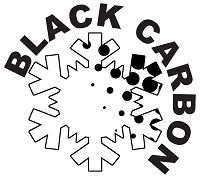Some results
Some results
The satellite measurements show that high concentrations of black carbon (from local sources) are clearly visible in the satellite signal, both over snow and glacier ice surfaces. Chemical black carbon analysis of snow and ice samples taken in the field show values consistent with the satellite data. Successful retrieval of low concentrations will require albedo modelling as an inherent part of retrieval algorithms.
Ideas for black carbon retrieval from satellite data has been developed by the pilot project. The work is recommended to continue in a main project. It is proposed to test the outlined algorithms on the Grønfjorden data set with very high black carbon concentrations, then to move on to a plateau glacier (or ice cap) to test and refine the algorithms further for black carbon at background levels. This work needs to include efforts on improved modelling of black carbon and impurities in general in the snowpack and on glacier ice surfaces. Finally, a cal/val campaign is proposed to calibrate and validate the retrieval algorithms for applications in the Arctic in general.
.png)
Measurement site at Grønfjordbreen.

